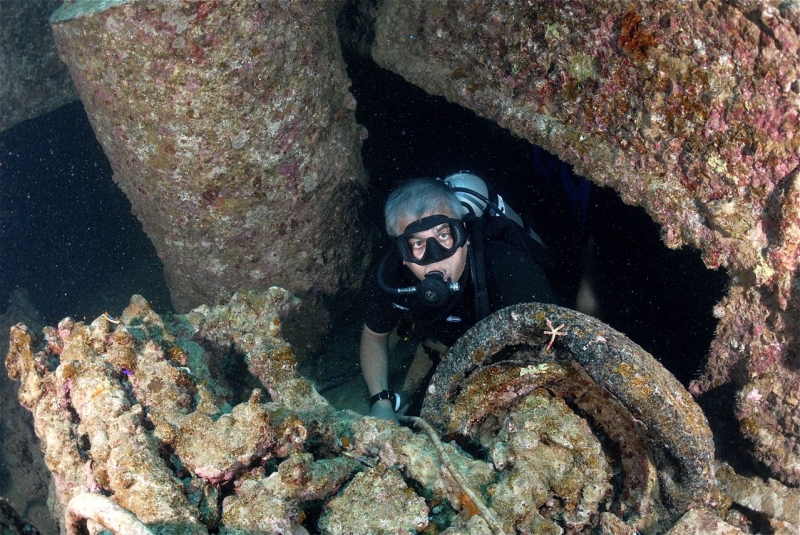Give Us a Call +1 (855) DIVE UTD

Give Us a Call +1 (855) DIVE UTD


Business: Unified Team Diving
Wrecks are an obvious attraction to any diver: they hold a promise of history, of mystery, and going where few dare. It’s an underwater haunted house. Of course, they also hold a tremendous potential for danger to the unwary diver. Even the essential equipment, doubles and guidelines, are complicated and there are many subtle and potentially dangerous issues that divers must be acquainted with while wreck diving.
UTD Wreck 1 Diver is designed to prepare divers for basic skills needed to penetrate a wreck safely while using doubles and a guideline. Students will learn the essentials of gas management, running and retrieving a guideline, following the line, no visibility line protocols, and failures associated with wreck penetration.
Historically, introductory level wreck classes have been so heavily distilled that very little actual information remains.
This class strives to both instruct students in techniques for proper wreck diving, and then simulate “failures” in a controlled manner to ensure the retention of protocols even in the face of problems. At UTD, we always believe in training beyond your level of diving, as opposed to diving beyond your level of training.
Prerequisites
Course Limits

Wrecks are an obvious attraction to any diver: they hold a promise of history, of mystery, and going where few dare. It's an underwater haunted house. Of course, they also hold a tremendous potential for danger to the unwary diver. Even the essential equipment, doubles and guidelines, are complicated and there are many subtle and potentially dangerous issues that divers must be acquainted with while wreck diving. Even if a diver is familiar and comfortable with all the essential gear, the introduction of an emergency can create undue levels of stress that can cause poor decision making. This class strives to both instruct students in techniques for proper wreck diving, and then simulate "failures" in a controlled manner to ensure the retention of protocols even in the face of problems. At UTD, we always believe in training over your level of diving, as opposed to diving over your level of training.
Who is this class designed for?
This ”skill-intensive” class is designed for those who want to learn to apply UTD overhead protocols to their desire to penetrate wrecks. Go beyond the perimeter of the outside of the wreck and want to penetrate wrecks safely while understanding and using double cylinders and a guideline without entering into extended decompression. The workshop instructs divers in the use/failures of doubles, enriched air for bottom mixtures, full guideline use, failures and protocols. It is a minimum decompression class that has a max depth of 100ft (30m). Individuals interested in a less robust curriculum should consider a more conventional wreck class offered by other recreational agencies.
Class Information
The course is normally taught after completion of the UTD Overhead Protocols class. Wreck Diver is usually held over three days, encompassing roughly 30 hours of instruction, including 8 hours of academics, and six dives in and around the wreck. This class will focus on the DIR protocols of overhead environment diving and what important knowledge, understanding and skills and hazards of wreck diving.
Topics include
Diving skills include
When merged with other DIR skills such as team diving and precision diver control, individuals are able to appreciate a whole new world of wreck penetration, having more fun while diving safer and more responsibly. Simply put, these techniques and principles enable divers to maximize their personal abilities and eliminate some of the frustrations common in conventional wreck diving.
Day 1. Since all Wreck Diver students have completed Overhead Protocols, Wreck Diver begins on the wreck. Typically we begin with a 3 - 4 hour initial session consisting of introductions and dry runs (on land) of the skills and some practice before entering the water. Then we begin our actual training dives. We will conduct two dives where we lay guideline line on and inside a wreck while progressively penetrating deeper in the wrecks. Afterwards we will do the video debrief and continue lectures on the the variety of gases we could use, the history of decompression.
Day 2. We start the day with dive planning examples followed by two dives where we continue to work the penetration distances, the gases and skills needed inside the wreck. Followed by lectures of decompression modeling and learning to understand minimum decompression procedures and video debriefings.
Day 3. Centered around gaining more experience in the wreck environment. You will conduct two dives to a max depth of 100ft/30m within NDL limits followed by video debriefing and a review session.
All UTD classes are videotaped for educational review, as we believe this is invaluable for students to visually focus on their individual in-water skills, situational awareness, communication, and team diving. Learning to self evaluate is an important aspect of any class, and video is one of the most important tools we have for instruction.
You will be evaluated during the class to obtain the UTD "Wreck Penetration Level 1" Certification. This Certification will allow you to dive within the class limitations and safely penetrate wrecks within the receational depths. Our focus is the complete dedication to your diving skills, knowledge & in water practice. To help prepare for the rigors ahead, see our Learning Center you can find out more information about the class, the equipment and skills you will be evaluated on.
Requirements
Guidelines
Equipment Specifications
There are no reviews yet. Be the first to write one!
There are no reviews yet. Be the first to write one!